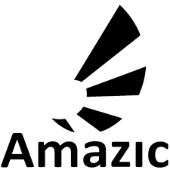Search the Community
Showing results for tags 'stateful apps'.
-
GitOps represents a transformative approach to managing and deploying applications within Kubernetes environments, offering many benefits ranging from automation to enhanced collaboration. By centralizing operations around Git repositories, GitOps streamlines processes, fosters reliability, and nurtures teamwork. However, as teams embrace GitOps principles, the natural question arises: can these principles extend to managing databases? The answer is a resounding yes! Yet, while GitOps seamlessly aligns with stateless application management, applying it to stateful workloads, especially databases, presents distinct challenges. In this article, we’ll delve into the landscape of implementing GitOps for stateful applications and databases in Kubernetes, exploring five essential best practices to navigate this terrain effectively. Considerations for applying GitOps to stateful applications Versioning and managing stateful data When applying GitOps principles, it’s crucial to version control persistent data alongside application code. Tools like Git LFS (Large File Storage) can help you manage large datasets efficiently. Ensure that changes to stateful data are captured in Git commits and properly documented to maintain data integrity and facilitate reproducibility. Handling database schema changes and migrations Database schema changes and migrations require careful handling in GitOps workflows. Define database schema changes as code and store migration scripts in version-controlled repositories. Test and apply migrations consistently across environments with automated tools and continuous integration/continuous delivery processes. Backup and disaster recovery strategies Develop robust backup and disaster recovery strategies for stateful applications. Regularly back up data and configuration files to resilient storage solutions. Test data recovery and automate backup procedures to ensure preparedness for unforeseen events or data loss. You can also leverage GitOps practices to manage backup configurations and version-controlled recovery plans. Managing migrations like any other GitOps application Migration should follow suit as applications are deployed and managed using GitOps principles. This means defining migration tasks as declarative configurations stored in Git repositories alongside other application artifacts. These migration configurations should specify the desired state of the database schema or data transformation, including any dependencies or prerequisites. GitOps operators, such as the Atlas Operator for databases, can then pull these migration configurations from Git repositories and apply them to target databases. The operator ensures that the database’s actual state aligns with the desired state defined in the Git repository, automating the process of applying migrations and maintaining consistency across environments. Handling stateful application upgrades and rollbacks Planned and executed stateful application upgrades and rollbacks carefully. Define upgrade strategies that minimize downtime and data loss during the migration process to minimize downtime and data loss. Utilize GitOps principles to manage version-controlled manifests for application upgrades, ensuring consistency and reproducibility across environments. Implement automated rollback mechanisms to revert to previous application versions in case of failures or issues during upgrades. Best practices for implementing GitOps with stateful applications Infrastructure as Code (IaC) for provisioning storage resources Make your storage resources part of your Infrastructure as Code (IaC) practices. Define your storage configurations using tools like Terraform or Kubernetes manifests, and keep them version-controlled alongside your application code. This ensures consistency and reproducibility in your infrastructure deployments. Using Helm charts or operators Simplify the deployment and management of your stateful applications, including databases, by using Helm charts or Kubernetes operators. Helm helps package and template complex configurations while operators automate common operational tasks. Pick the best fit for your needs and keep your application management consistent. Implementing automated testing Automate your testing as much as possible for your stateful applications, including database changes. Develop thorough test suites to check everything from functionality to performance. Tools like Kubernetes Testing Framework (KTF) can help simulate production-like environments and catch issues early on. Continuous (CI/CD) pipelines Set up CI/CD pipelines tailored to your stateful applications, focusing on databases. Automate your build, test, and deployment processes to ensure smooth operation. Remember to trigger pipeline executions based on version-controlled changes so you have consistent deployments across different environments. Storing everything in Git By storing everything in Git repositories, teams benefit from version control, traceability, and collaboration. Every change made to configurations or migrations is tracked, providing a clear history of modifications and enabling easy rollback to previous states if necessary. Moreover, Git’s branching and merging capabilities facilitate collaborative development efforts, allowing multiple team members to work concurrently on different features or fixes without stepping on each other’s toes. Mastering GitOps for stateful workloads Applying GitOps principles to stateful applications, including databases, brings numerous benefits to development and operations teams. By storing everything in Git repositories, including data, migration scripts, and configurations, teams ensure version control, traceability, and collaboration. Handling database schema changes, migrations, and backups within GitOps workflows ensures consistency and reliability across environments. Moreover, managing migrations and upgrades as part of GitOps applications streamlines deployment processes and reduces the risk of errors. Implementing best practices such as Infrastructure as Code (IaC), leveraging Helm charts or operators, and implementing automated testing and CI/CD pipelines further enhances the efficiency and reliability of managing stateful applications. By adopting GitOps for stateful applications, organizations can achieve greater agility, scalability, and resilience in their software delivery processes. With a solid foundation of GitOps principles and best practices in place, teams can confidently navigate the complexities of managing stateful applications in Kubernetes environments, enabling them to focus on efficiently delivering value to their customers. The post 5 Best practices for implementing GitOps for stateful applications and databases in Kubernetes appeared first on Amazic. View the full article
-
- best practices
- kubernetes
-
(and 2 more)
Tagged with:
-
Forum Statistics
43.9k
Total Topics43.4k
Total Posts
.png.6dd3056f38e93712a18d153891e8e0fc.png.1dbd1e5f05de09e66333e631e3342b83.png.933f4dc78ef5a5d2971934bd41ead8a1.png)
